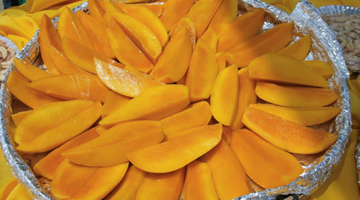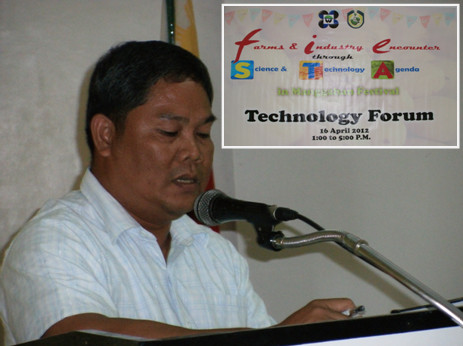 It’s the season for this delectable fruit, touted as the sweetest in the world. Aside from being sweet, it is best known for its yellow-orange and succulent flesh, which is a temptation that is too hard to resist even among diabetics. This is the Philippine mango.
It’s the season for this delectable fruit, touted as the sweetest in the world. Aside from being sweet, it is best known for its yellow-orange and succulent flesh, which is a temptation that is too hard to resist even among diabetics. This is the Philippine mango.
With a domestic production worth P41.6 billion, the mangoes that we savor in abundance in summer support about 2.5 million farmers. Also, its gross value added contribution to agriculture is P12.5 billion with exports valued at US$31 million for its fresh fruits and US$29.7 million for its processed products.
Filipinos are so much into mango (both as consumer and producer) that the country ranked as the 7th and 6th biggest producer and exporter, respectively, in the world.
The science behind
 Science and technology plays a big role in the success of the mango industry. This was the key message of Bureau of Plant Industry-National Mango Research and Development Center (BPI-NMRDC) OIC Chief Yondre J. Yonder in his presentation for the mango techno forum held during the recently concluded “19th Manggahan Festival”.
Science and technology plays a big role in the success of the mango industry. This was the key message of Bureau of Plant Industry-National Mango Research and Development Center (BPI-NMRDC) OIC Chief Yondre J. Yonder in his presentation for the mango techno forum held during the recently concluded “19th Manggahan Festival”.
In the forum, sponsored by the Philippine Agriculture, Aquatic and Natural Resources Research and Development (PCAARRD) and its regional partner, the Western Visayas Agriculture and Resources Research and Development Consortium, Yonder enumerated some of the research and development (R&D) works on mango done by government institutions.
“A protocol for extended hot water dip treatment (EHWD) was already established”, Yonder started. He explained that EHWD is an accepted method used to disinfest mango fruits against fruit flies. The treatment made it possible for the country to export the fruit to China.
Yonder also mentioned that the national survey on mango seed and pulp weevils was conducted. Results of the survey showed the absence of mango seed weevil and mango pulp weevil (MPW) except in Palawan where there is still the incidence of MPW.
He also reported that a system for planting of tissue-cultured plantlets to soil media was developed along with a protocol for the regeneration of plantlets.
“To maintain the mangoes’ quality, irradiation protocol on postharvest was also established”, he continued. Irradiation is an alternative to vapor heat treatment for disinfecting mango seed and pulp weevil. The technology is rapid, safe, and convenient though costly.
Methods to determine maturity of mango fruits were established. The code of Good Agricultural Practice (GAP) was also developed.
Yonder added that low bark grafting on mango is now made possible by the BPI-Davao National Crop Research and Development Center.
BPI-NMRDC, for its part, is maintaining the germplasm on mango with the continuous collection, evaluation, characterization, and documentation of different mango accessions.
New initiative
In a related development, PCAARRD and the Department of Science and Technology are funding a program titled “Advancing the Philippine mango industry: Production of export-quality mangoes”.
The program aims to expand the supply of safe and export-quality mangoes with the adoption of Integrated Crop Management and Postharvest Quality Management practices, and GAP and Quality Assurance guidelines (Project 2). It also aims to develop pre- and postharvest tools/equipment and facilities for mango production and processing in Region11 (Project 1).
Aside from Region 11, the Program’s Project 2 will be implemented in Regions 1, 2, 3, 4, and 6.
